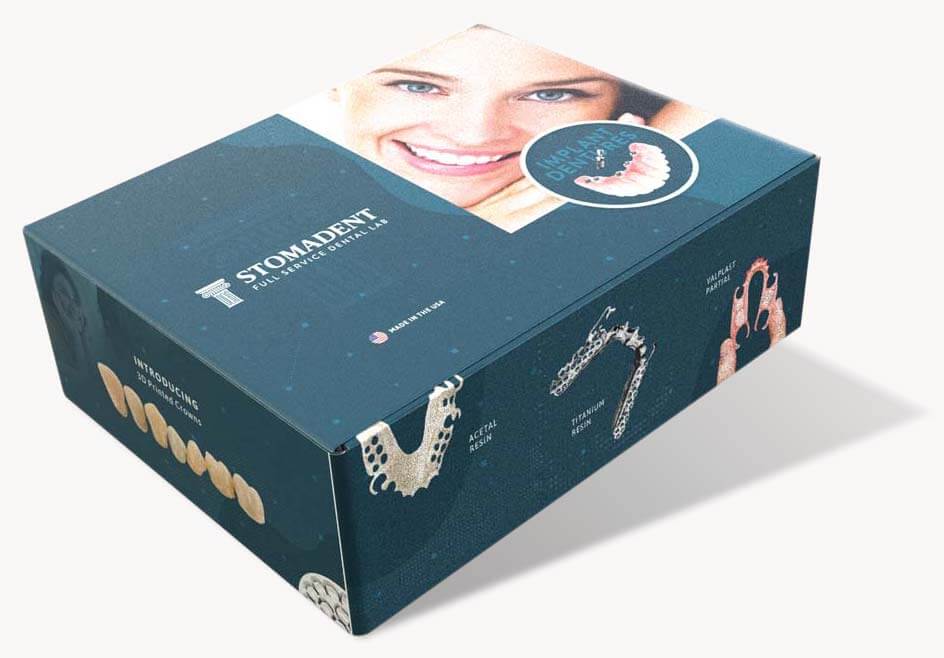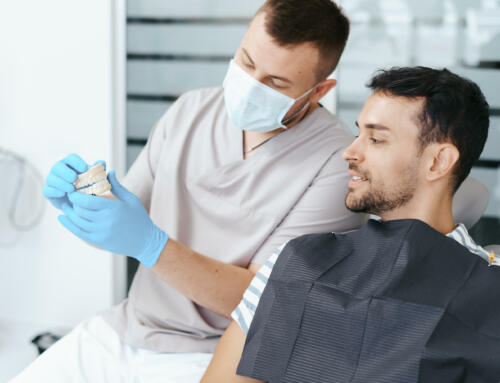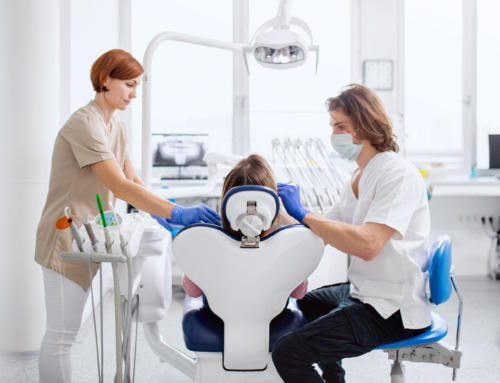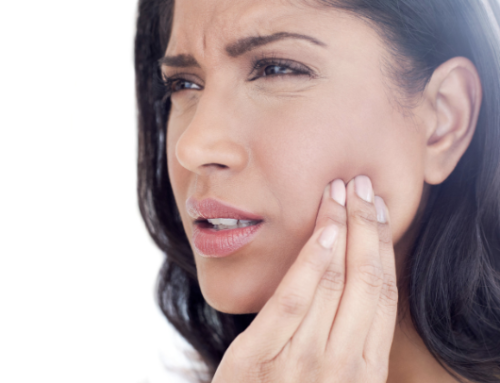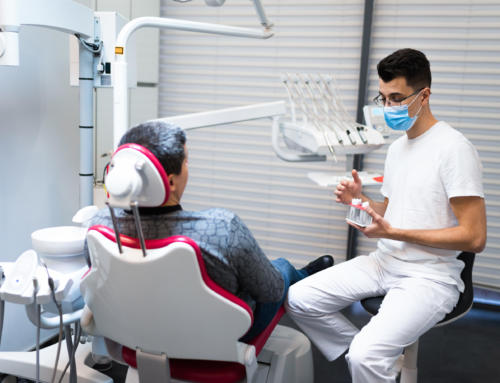Guiding Patient Use of Denture Adhesives

Hybrid Dentures: Definition, Benefits, Tips & More

By David Hudnall, DMD
Denture adhesives are a popular topic among denture wearers. With the plethora of advertising, most denture patients automatically assume that using adhesives are a necessary part of wearing dentures, and they don’t realize that well-fitting dentures will stay in place without the use of denture adhesives.
Only when gaps exist between the tissue and the intaglio surface of the denture are adhesives truly beneficial as a temporary method for filling space that prevents the denture from forming a tight seal. This article will serve as a guide to help dental professionals direct patients to the proper use of denture adhesives.
Types of Dental Adhesives
There are four primary types of denture adhesives available to consumers – powders, pastes, creams, and pads.
They all contain similar components, including both rapid-acting and long-lasting adhesives, antimicrobial agents, and flavoring agents. Let’s review the specifics of each.
Powders
Denture powders add an extra layer of security for a denture that otherwise fits quite well. The use of powders is appropriate when the patient is concerned that their dentures may slip at the most inopportune moment – like when giving a speech or attending a formal dinner.
Pastes
A paste is the form of adhesive that comes to mind when someone mentions using a denture adhesive – the type that is gooey, messy, and difficult to remove. Paste adhesives improve the seal of dentures by preventing food debris from becoming trapped underneath the denture.
Pastes also provide a cushioning effect that helps reduce ulcer formation, tissue irritation, and tissue compression in patients with friable, sensitive tissue.
Creams
Creams are basically powdered adhesives that are dispersed and distributed into a mineral oil or petroleum base. They work similarly to pastes but are generally easier to apply and clean up.
Pads and Strips
These are designed to take up space when older dentures become loose, buying the patient time until a reline can be performed, or a new denture can be fabricated. Pre-formed strips work best for small areas such as partial denture saddles or lower dentures.
Denture pads accommodate the general shape of either the upper or lower complete denture and may be trimmed accordingly in order to improve coverage area while preventing over-extension.
How to Apply Dental Adhesives: Step by Step

As dental professionals, patients look to us for advice and guidance. This includes over-the-counter dental products such as the best denture adhesives. Since creams and pastes are the forms of denture adhesives that most patients struggle with, let’s concentrate on developing some reliable methods for their application and removal.
Select a Quality Dental Adhesive
Denture adhesives work by swelling by 50 to 150 percent in volume when hydrated, thus filling voids and improving the seal between the denture base and the denture-bearing tissues. The first step involves selecting the type of denture adhesive product that is appropriate and suitable for the application.
Many patients prefer to use zinc-free formulations due to health concerns over potential side effects that have been reported.
Clean and Dry Denture
Whether applying adhesive to a complete denture or a partial denture, for an adhesive to work correctly, it must be applied to a denture that is free of biofilm, debris, and saliva. The presence of saliva or biofilm on the denture will prevent the molecules present in the adhesive from creating a good seal.
Apply Dental Adhesive
For denture pastes or creams, apply 3 small dots of adhesive equidistantly on the intaglio surface of the mandibular prosthesis and 4 small dots on the maxillary prosthesis. Denture adhesive is one of those products where using more is not better.
Because adhesive formulations have slightly different mechanisms of action, always read the directions on the packaging provided by the manufacturer for the adhesive that you have selected for proper placement.
Disperse Adhesive
Spread the adhesive into a thin, even layer over the entire intaglio surface of the prosthesis using a clean, dry finger. Adhesive in powdered form may be lightly sprinkled onto the intaglio surface directly from the bottle. Pads or strips should be placed in trimmed form in the proper orientation on the tissue side of the denture.
Submerge Dentures
To hydrate and prepare the adhesive for use, lightly sprinkle the adhesive surface with a few drops of cool water.
Place Dentures
Quickly place and seat the denture in the mouth while applying finger pressure. Then bite down and maintain pressure for 5 to 10 seconds to allow the adhesive to spread, completely filling the space between the denture base and the oral tissues.
How to Remove Dental Adhesives: Step by Step
As important as it is to learn how to use denture adhesives correctly, equally important is how to remove adhesive completely from the denture and the oral tissues. Since most dentures do not remain secure with adhesives for the entire day, adhesives must be removed prior to re-application.
Patients will want to understand the best and most effective way to remove adhesive remnants from their dentures because they will be doing so two or more times each day.
Initial Loosening
Take a sip of warm tap water and swish thoroughly in order to loosen the adhesive’s grip. Then expectorate and remove the dentures from your mouth.
Submerge Dentures in Warm Water
Place the dentures in a container filled with enough warm water to completely cover the dentures. Allow the dentures to soak while removing adhesive from the mouth.
Remove Adhesive Residue from Mouth
Take another sip of warm water and swish vigorously to soften any adhesive that remains attached to the tissue.
Clean Mouth with Toothbrush
Use a soft bristle manual or electric toothbrush to loosen and remove debris, biofilm, and adhesive from the oral tissues. Then expectorate. Repeat the process as necessary to ensure that the entire mouth is free of adhesive remnants.
Clean Denture with Brush
Finally, use a soft-bristle denture brush or an electric toothbrush to remove the softened adhesive and debris from the prosthesis while it remains submerged in warm water.
Digital Dentures for Superior Fit and Comfort
As you see by the number of steps involved, applying and removing denture adhesives every day is time-consuming, not to mention costly. Wouldn’t it be better to offer your patients dentures that form a tight seal without the use of adhesives?
Stomadent Dental Laboratory offers Digital Dentures designed to create intimate contact with all of the tissue surfaces, providing more comfort than any traditionally-processed dentures can provide. Our 3D-printed and milled dentures fit so well that denture adhesives can become a thing of the past.
See all of the benefits of Digital Dentures when you visit us online. At Stomadent, we are revolutionizing removable prostheses!

